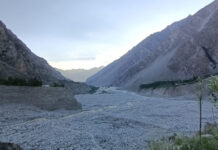Be it “47 Metres Down”, “The Meg”, or Jurassic Shark”, every shark movie is all about painting the shark as the scariest animal ever. However, this is not the case always.
Sharks do have their enemies and they also fear “someone”. There is “someone” who can scare the shark away from its feeding ground.
That extraordinary competitor of shark is the killer whale.
Normally, most of the whales have a peculiar diet that includes small sea animals like shrimps, crabs, squids, and small fish. However, the killer whale has some different taste.
As the name suggests, killer whales are among the top predators (or killers) of larger sea animals such as seals, sea lions and also other whales.

This particular whale also has the tendency to scare and least likely, attack the disreputable sharks. To investigate this paradoxical phenomenon, a team of scientists from Monterey Bay Aquarium studied the relationship between the killer whale, great white sharks and their dominant prey, elephant seal.
Elephant Seals are a type of sea mammal. Both, the Killer Whale and the Great White Shark, love to eat young ones of Elephant seals. However, something unusual happens when both predators join each other at the feeding grounds.
Generally, the great white sharks feed on younger elephant seals right before expediting their seasonal migrations. Having said that, this feeding pattern highly depends on the birth of Elephant Seals, which occurs during fall and early winters.

Sharks feel energetic after eating seals, as a result of which, sharks can easily cover longer migratory distances.
However, the process is not as simple as it looks. A real dispute occurs when Killer Whales enter the scene.
Although both the rivals share an almost same place to live, they rarely encounter each other. But the face-off begins when both of the animals come to eat similar prey, the younger elephant seals.
Upon their arrival, the Killer Whales horrify the Great White Sharks. Later one flees off the crime scene to avoid any contention.
The study was conducted in the Northeast Pacific and Southeast Farallon Islands between 1987 to 2013. The research team used electric tags and also surveyed the site throughout the study period to get accurate results.

Their findings revealed that sharks stopped to appear in the feeding area when Killer Whales entered there. This exodus of sharks was recorded in 2009, 2011 and 2013.
To keep themselves safe, sharks hardly show appear in front of the mighty Killer Whale. Thus, this proactive step keeps them from stepping into any quarrel. However, the study team documented one such lethal interaction on October 4, 1997.
Consequently, the great white shark faced severe liver injuries.

Although sharks and whales lie in the same position in a food web, still, there exists a so-called competition between them. Many of the researches have discussed the relationship between prey and predator (or food and consumer).
However, very few studies are done to investigate the relationship between top predators, lying on the same level in a food web.
This research sheds light on the significance of a similar relation. However, more has to be done to understand complex relationships among top predators of nature.




























